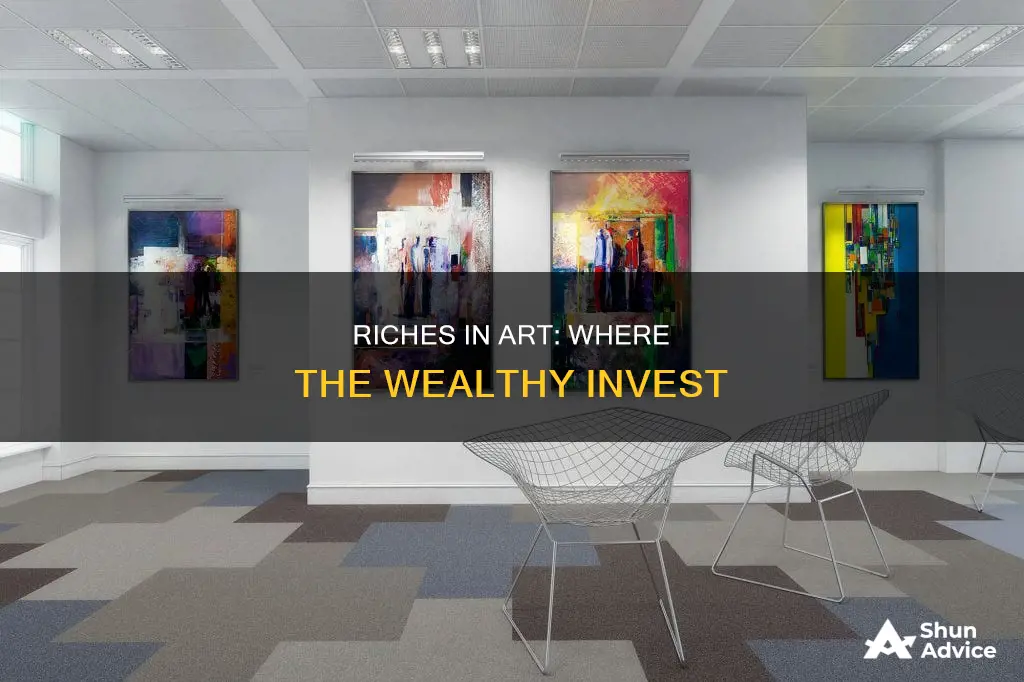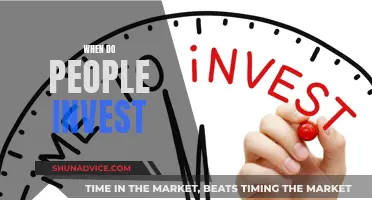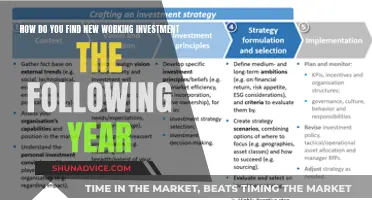
Art has become an increasingly popular investment option for the rich, offering both financial gains and a way to showcase their cultural sophistication. The global art market's value reached $65.1 billion in 2021, attracting wealthy individuals seeking to diversify their portfolios and protect their wealth during economic uncertainty. Art, unlike stocks or bonds, tends to maintain its value during turbulent economic times, making it an attractive investment option for high net worth individuals.
The rich often view art as a strategic investment, with modern art pieces potentially increasing significantly in value over time. Additionally, art provides a sense of prestige and status among peers, enhancing the collector's social standing. The Joy of Ownership is a key motivation for wealthy individuals, who take pleasure in acquiring and displaying unique and extraordinary artworks.
The art market has seen record-breaking sales, with Leonardo da Vinci's Salvator Mundi selling for $450 million, and Jean-Michel Basquiat's Untitled selling for $110.5 million. These sales highlight the potential for substantial returns in the art market, making it a lucrative investment avenue for billionaires and celebrities alike.
| Characteristics | Values |
|---|---|
| Financial gain | High returns |
| Cultural appreciation | Cultural and social benefits |
| Social status | Prestige |
| Store of value | Hedge against inflation |
| Portfolio diversification | Tax avoidance |
| Passion for art | Personal enjoyment |
| Legacy planning | Long-term investment |
What You'll Learn

Art as a status symbol
Art has long been associated with status, with ownership of masterpieces serving as a symbol of wealth, power, and social standing. In recent times, art has become an important status symbol for the super-rich, with collectors seeking out ""status symbol masterpieces" that serve as public declarations of their affluence.
For the ultra-wealthy, art is not just about financial capital; it is also about cultural and symbolic capital, which helps to legitimize their status in elite circles. Owning a prestigious, high-value piece of art elevates a billionaire's standing among their peers and within society as a whole. This is particularly true for contemporary art, which is highly collectible and rare, with many works being one-of-a-kind or limited editions. The exclusivity of contemporary art creates a sense of luxury and prestige, appealing to the wealthy's desire for uniqueness and status.
Art also serves as a marker of intellectual sophistication and refined taste, enhancing the collector's reputation and social status. Celebrities like Jay-Z and Beyoncé, for example, have amassed impressive art collections, showcasing their cultural capital and sophistication. Similarly, corporations like Goldman Sachs and Deutsche Bank use art to showcase their wealth and status to clients and employees.
In addition to its social and cultural benefits, art can also be a strategic investment for the rich. Art is a tangible asset that can act as a store of value and a hedge against inflation, maintaining its value even during periods of economic turmoil. This makes it an attractive option for diversifying portfolios and managing wealth, especially during times of economic uncertainty.
Furthermore, art has the ability to appreciate in value over time, offering the potential for high returns. In recent years, the art market has experienced significant growth, with many works selling for record-breaking prices. This has created a mutually beneficial relationship between art markets and the super-rich, with art markets creating art superstars, and the rich obtaining their status symbols.
The rich also view art as a legacy, allowing them to leave a lasting impact on the world long after they are gone. This is particularly important for those with a genuine love for art, who derive great pleasure from collecting and showcasing the works of various artists.
Overall, art plays a crucial role in the world of the rich, serving as a powerful status symbol that confers prestige, enhances reputation, and provides financial and legacy benefits.
Investing in Others: A Worthy Bet
You may want to see also

Tax avoidance
Art investment is an attractive prospect for the wealthy due to the potential for tax avoidance. Artworks are considered capital assets and can be subject to preferential tax treatment. When an artwork is sold for a profit, the capital gains tax rate can often be lower than the tax rate for ordinary income. This is a key incentive for the rich to invest in art.
In some countries, such as the United States, tax regulations favour individuals who frequently purchase expensive art. For example, if an individual sells a piece of art and deposits the funds in a bank, they would typically incur capital gains tax. However, if they use those funds to invest in another artwork, they can avoid paying taxes on that income. This practice, known as 1031 exchange or like-kind exchange, allows art collectors to defer or minimise their tax liability. While some lawmakers disapprove of this practice, it is legal and provides significant financial benefits to art investors.
Additionally, the establishment of art museums as public institutions can offer tax advantages to wealthy art collectors. They can donate artworks from their collection and receive a tax deduction for the charitable gift. They may also loan their artwork to museums and claim deductions for associated expenses such as insurance and transportation.
The use of offshore entities, such as offshore trusts, is another strategy employed by high-net-worth individuals to minimise taxes on their art collections. These structures help them avoid estate and gift taxes while also providing increased privacy and confidentiality. However, these strategies have been criticised as ways for the ultra-wealthy to avoid paying their fair share of taxes.
Measuring Investment: People Over Profits
You may want to see also

Diversifying portfolios
Tangible Asset with Store of Value
Art, particularly prestigious and iconic pieces, is a tangible asset that can act as a store of value and a hedge against inflation. In uncertain economic times, art, unlike stocks or bonds, can maintain its value and even appreciate. This makes it an attractive option for investors looking to safeguard their wealth.
Low Correlation with Financial Markets
The art market often operates independently of traditional financial markets, making it a valuable diversification tool. Its low correlation with stocks and bonds means that investors can reduce their overall risk exposure. During economic downturns, art may not experience the same volatility as other financial assets.
Potential for High Returns
Art, especially works by renowned and emerging artists, has the potential for substantial returns. Blue-chip artists, iconic pieces, and emerging talents can appreciate over time, offering the possibility of significant profits. This makes art an appealing investment option for those seeking higher returns while diversifying their portfolios.
Tax Benefits
In certain jurisdictions, such as the United States, tax regulations favour art investments. For example, investing in another artwork after selling one can help avoid capital gains tax, whereas depositing the funds in a bank would incur this tax. Additionally, structures like trusts or foundations can further reduce or defer taxes on art collections.
Illiquidity and Cost Considerations
Art is considered an illiquid asset, meaning it can take time and effort to find a buyer and complete the sales process. This is an important consideration for investors who may need to liquidate their holdings quickly. Additionally, art ownership comes with costs beyond the purchase price, such as care, maintenance, insurance, and appraisal fees.
Building a Diversified Art Portfolio
When constructing an art portfolio, it is essential to define your investment goals and risk tolerance. Research different art genres, artists, and movements, and consider their historical performance. Diversify by including works from various genres, styles, and time periods, and balance investments in established blue-chip artists with emerging artists who show potential. Art funds or exchange-traded funds (ETFs) can also provide exposure to a diversified portfolio of artworks without the need for direct ownership.
Gov't Spending: Young vs. Old
You may want to see also

Art as a secure store of funds
Art is a high-risk asset, but it has some unique advantages that make it a secure store of funds. Firstly, art market rate fluctuations are different from share market price swings, meaning that art can be used to hedge against recession or economic crisis. This is particularly appealing during times of economic uncertainty, when wealthy individuals often turn to tangible assets like art to protect their wealth.
Art is also less correlated with traditional financial markets, so it can help billionaire collectors to better manage their wealth and reduce their overall risk exposure. This makes art an attractive option for diversifying portfolios, especially for those with a large number of high-value assets.
Art is a tangible asset, and its value is not directly linked to financial markets, making it less susceptible to market volatility. Over the years, the art market has proven to be lucrative, with top-tier artworks regularly fetching millions at auction. For example, in 2021, Leonardo da Vinci's "Salvator Mundi" sold for a record-breaking $450 million, and in 2021, the global art market value was $65.1 billion.
Art also offers tax advantages. In some countries, tax regulations favour those who purchase expensive art frequently. For example, if you sell a piece of art and invest the funds in another artwork, you may be able to avoid paying capital gains tax. Additionally, artworks can be considered capital assets, which may result in preferential tax treatment.
Wealthy individuals also view art as a long-term store of value and a hedge against inflation. As a tangible asset, art is not subject to the same market fluctuations as other financial instruments, and it has shown impressive growth in value over the years.
Nike: A Smart Investment Choice?
You may want to see also

Cultural pride
Art has long been a way for people to express cultural pride, and this is no different for the wealthy. In fact, cultural pride is one of the many reasons why rich people invest in art.
Pride in one's culture is a powerful motivator for individuals to invest in art. This is especially true for those who want to showcase and celebrate their cultural heritage. For example, the LGBTQIA+ community has been at the forefront of utilising art as a means of cultural expression and advocacy. Through art, they have created spaces where they can celebrate their identities freely and foster a sense of community. The annual Pride Month celebrations, which evolved from the Stonewall Riots of 1969, are a testament to this, with colourful parades, festivals, and educational events that raise awareness and promote inclusivity.
Wealthy individuals may also invest in art to showcase their cultural pride. This can be seen in the increasing trend of the rich acquiring modern and contemporary art pieces. By doing so, they not only elevate their social status but also associate themselves with the cultural sophistication that comes with owning prestigious artworks.
Additionally, cultural pride can be a driving force for the wealthy to establish art galleries and exhibitions. In some cases, such as in China, establishing an art gallery is a strategic move to gain approval for real estate deals. This intertwining of cultural pride and financial interests demonstrates the multifaceted nature of art investments by the wealthy.
Furthermore, art can serve as a means of legacy planning for rich individuals. By investing in culturally significant artworks, they can leave behind a collection that not only holds monetary value but also carries the weight of cultural pride and influence.
Lastly, cultural pride can be a factor in the type of art that billionaire collectors invest in. Blue-chip art, which refers to works by established artists with a high demand and strong market performance, can be a way for collectors to showcase their cultural pride while also making a safe investment.
In conclusion, cultural pride is a significant factor in the art investments made by rich individuals. Through their acquisitions, they express their cultural heritage, elevate their social status, and even shape cultural trends. The intersection of cultural pride and financial motivations drives the art market and influences the types of art that wealthy individuals seek to collect.
Investing in People: Debt as an Asset
You may want to see also
Frequently asked questions
Rich people invest in art for a variety of reasons, including financial gain, cultural appreciation, and social status. Art can be a store of value and a hedge against inflation, offering high returns and portfolio diversification.
Investing in art provides rich people with the potential for high financial returns and diversification benefits. Art is a tangible asset that is less susceptible to market volatility compared to traditional investments. It also offers cultural and social benefits, enhancing their reputation and status while allowing them to support artists and cultural institutions.
Rich individuals acquire art through various channels, including auction houses like Sotheby's and Christie's, high-end art galleries like Gagosian Gallery and White Cube, private dealers such as Larry Gagosian and David Zwirner, art fairs like Art Basel and Frieze Art Fair, and online platforms like Artsy and Saatchi Art.
Rich collectors often invest in blue-chip art, which refers to works by well-established artists with a proven track record of high demand and strong market performance. They also invest in contemporary art, seeking out unique and extraordinary artworks by emerging and established artists.







